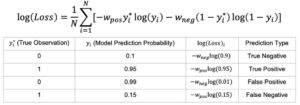Introduction
Across the United States, law enforcement is experimenting with predictive policing to predict crime. Given the weighty challenge of managing limited resources to meet departmental goals, precincts across the country are looking to AI algorithms for assistance. Companies like PredPol and ThirdEye Labs, in cooperation with local and state law enforcement, ingest enormous quantities of public and private data with the aim of discerning the places and people most likely to be involved in criminal activity .
Optimizing the allocation of a fixed resource (law enforcement personnel) towards maximizing a particular objective (reducing or mitigating crime) is a relatively straightforward task, and hardly novel. Similar data-rich computationally hard problems in economics, logistics, and supply-chain management are routinely posed and solved using powerful AI systems which incur tremendous financial upside. Why, proponents argue, should the domain of law enforcement be any different, especially given the societal benefits of crime reduction?
Critiques of Predictive Policing
While the capabilities of AI to optimize the management of fixed resources is not disputed, nearly every other facet of predictive policing systems has proven contentious. Most notably, the content and quality of datasets supplied to such models are criticized both for unnecessary violations of privacy and inherent systemic biases . While protected information such as race and ethnicity may not be directly supplied, other available demographic variables such as family background, income, and neighbourhood can influence models too. Since these variables reflect an unjust society rife with problems such as redlining, intergenerational poverty, and under-resourced public schools, they are inherently flawed. Furthermore, historic data biases towards certain classes, races, or people groups can be inadvertently perpetuated . It seems unlikely that these model limitations will ever be resolved to the satisfaction of legal experts and activists. It is also unclear how law enforcement personnel will employ these new tools, be it for decision augmentation or civilian harassment .
Assessing current political and social forces, predictive policing seems to have staying power despite a litany of harmful shortcomings. How, then, can people of faith imbue God’s mercy and justice in the design and deployment of predictive policing models? As a Christian, how can a Christ-focused theology of mercy and justice aid us?
Parole: AI and Binary Decision Making
Parole provides an opportunity to consider predictive policing in a compact scenario. The decision to parole an inmate after some period of incarceration comes down to the Prisoner Review Board, a small cadre of state-appointed individuals evaluating inmates subjectively based on criteria like the seriousness of the original crime, future employment status, and perceived chance of recidivism . Classical statistical models and AI models have been proposed to aid the Board in this binary decision-making process: to reincarcerate the inmate and deny them their freedom or release the inmate and risk an increase in future criminal activity .
A model trained to perform binary classification (like “reincarcerate” or “release”) will inevitably produce two types of error: the false negative and the false positive. A common binary classification objective function (known as weighted binary cross-entropy) is given in Figure 1 and shows how a model will seek to minimize the rate of false negatives (inmates who are not granted parole but would not have committed a crime) and false positives (inmates granted parole who commit a crime) during the training process. The degree to which a model ought to tolerate false negatives versus false positives can be adjusted using weighting values. These weightings are quite important in the case of a parole model, as they will impact the overall percentage of inmates granted parole. The difficulty of weighing false negatives versus false positives is complicated by the fact that false positives are readily observed, while false negatives are not observed, since it is impossible to determine the counterfactual.

Figure 1: Binary cross entropy equation, with some examples of true observations and model predictions.
The values we assign to positive and negative weights are incredibly important, and without their assignment, a parole model cannot be trained properly. For this binary choice, our Christian ethical framework of justice and mercy within law enforcement must be boiled down to its pithiest essence and reformulated as just two numbers. These numbers will quantitatively and transparently express how we balance our moral outrage at the unnecessary incarceration of convicted persons with our fears that those same persons will return to criminal activity. While there is no easy solution to this problem, be it expressed quantitatively or qualitatively, Christians can draw from a long history of prayerful consideration of the place of justice and punishment in our society.
A Christian Image of Justice
In a 2011 article entitled Mass Incarceration and Theological Images of Justice, Kathryn Getek Soltis describes two dominant Christian historical images of justice, and how these have been used and abused throughout history . These images of justice provide a framework to help us understand the trade-offs inherent in predictive policing models, including the example of parole decisions.
The first image of justice is lex talionis; that is, “an eye for an eye” (Leviticus 24:19-21). While retribution in such graphic terms may feel uncomfortable to us today, this principle empowers a victim to take back an equal measure of what they lost, while also not erring towards excessive retribution and sparking an escalation of further retribution. Lex talionis appeals to a human instinct of restored balance but often promises a sense of closure that cannot be delivered. Jesus directly speaks to this passage in his Sermon on the Mount: “You have heard that it was said, ‘Eye for eye, and tooth for tooth.’ But I tell you, do not resist an evil person. If anyone slaps you on the right cheek, turn to them the other cheek also.” (Matthew 5:38-39 NIV). Therefore, while a victim may be entitled to justified retribution, Jesus suggests that a victim should choose forgiveness and relational restoration instead.
The second image of justice is derived from a satisfaction theory of Jesus’ atonement. Satisfaction theory holds that Jesus’ complete obedience to the law satisfied God for the disobedience of humanity. This implies that a violation against another not only carries a penalty paid to that individual, but also an unpayable penalty against God. By some historical interpretations, the retribution that seeks to inflict suffering against an offender, even that which exceeds the original offense, is not only justified but necessary. Anselm of Canterbury, credited as the theologian behind the satisfaction theory of the atonement , offers a more conciliatory explanation. Anselm suggests that Jesus did not pay a debt to God by enduring the punishment humanity deserved, but instead satisfies the debt of humanity through His overwhelming love. By Christ’s obedience, during which he endured great suffering, are “God and sinners reconciled.” Our justice system should therefore empower individuals to reintegrate as functional members of society where possible, rather than create social pariahs susceptible to recidivism.
Conclusion
Constructing AI for predictive policing has the potential to enhance law enforcement in positive ways. However, these models have been plagued by many practical and systemic limitations. While it is unclear whether model biases and inequities will ever be sufficiently addressed, it seems that AI in law enforcement is here to stay. Temporarily setting aside these issues, we consider a model for determining whether an inmate should receive parole. We examine the quantitative metrics that will reflect necessarily our true moral incentives. We conclude by examining two perspectives on Christian justice, and how they may act as guides toward restoration and rehabilitation rather than retribution. As predictive policing grows in scope and size, many important ethical problems will need to be addressed. My prayer is that Christians will remain vigilant, be a voice for the downtrodden, and act in a spirit of reconciliation.
Acknowledgments
A big thanks to Melody Cantwell for her advice, suggestions, edits, and thoughtful questions. Thanks to Emily Wenger for proofreading, editing, and publishing this work.
References
Pearsall, Beth. “Predictive policing: The future of law enforcement.” National Institute of Justice Journal 266, no. 1 (2010): 16-19.
ACLU. “Predictive policing today: A shared statement of civil rights concerns.” American Civil Liberties Union (2016).
Hicks, Jasmine. “Go read this data analysis that uncovers predictive policing’s flawed algorithm.” The Verge (2021).
Brantingham, P. Jeffrey, Matthew Valasik, and George O. Mohler. “Does predictive policing lead to biased arrests? Results from a randomized controlled trial.” Statistics and public policy 5, no. 1 (2018): 1-6.
“Targeted: A Tampa Bay Times Project.” Tampa Bay Times https://projects.tampabay.com/projects/2020/investigations/police-pasco-sheriff-targeted/ (2021).
Mugari, Ishmael, and Emeka E. Obioha. “Predictive policing and crime control in the United States of America and Europe: trends in a decade of research and the future of predictive policing.” Social Sciences 10, no. 6 (2021): 234.
Meyer, Jon’A. F. “Strange science: Subjective criteria in parole decisions.” Journal of Crime and Justice 24, no. 1 (2001): 43-70.
McKay, Carolyn. “Predicting risk in criminal procedure: actuarial tools, algorithms, AI and judicial decision-making.” Current Issues in Criminal Justice 32, no. 1 (2020): 22-39.
Soltis, Kathryn Getek. “Mass incarceration and theological images of justice.” Journal of the Society of Christian Ethics 31, no. 2 (2011): 113-130.
Saint Anselm of Canterbury. Cur deus homo. Wipf and Stock Publishers, 2020.



